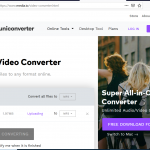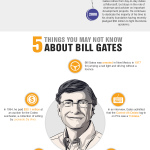How Has HR Technology Simplified The Recruitment Process?
We’re witnessing a tech boom that’s significantly altering the way we work — and how we think about HR. With truly innovative HR technologies developing, we’re reshaping the way we hire and onboard recruits.
Global HR technology venture capital has exceeded $3.1 billion this year, more than double the amount spent in 2017, according to The HR Federation’s 2019 HCM Trends study, a network of leading HR market researchers.
The way we advertise positions, track applications, communicate, and interview applicants have changed thanks to advancements in recruitment and hiring processes. So, what exactly are we talking about?
In this article, we are going to shed some light on how the emergence of HR technology has transformed the role of HR and how it has simplified the recruitment and onboarding processes.
Here are some points that will let you take a closer look at the role of HR technology in recruitment:
Finding Talent Becomes Easier
You may think of intricate, costly applications created for professional recruiters when you hear the term “recruitment technology.” However, some tools and technologies are both cost-effective and user-friendly. These technologies make it easier for businesses like yours to find qualified employees.
Applicant tracking systems (ATS) help in the organization and management of candidates. It can be used to advertise job openings, review resumes, and keep track of candidate’s progress in the recruiting process. You can also use the software to organize candidates by skill level by importing resumes.
Increased Productivity
It is well understood that higher productivity results in increased economic growth.
So, how does HR technology fit in? It helps minimize the time it takes to execute tedious tasks. Using HR technology you can simplify social sharing, email management, and task delegation. Not to mention the capacity to gather and arrange data fast.
Cutting out repetitive tasks and manual work saves a lot of time. An applicant tracking system, for instance, automatically imports resumes into the software. You can eliminate ineligible prospects without having to sift through a stack of paper resumes or mails.
Less Risk For A Bad Match
You don’t want to go through the full hiring procedure only to have new employees leave after a few weeks. The costs of employee turnover build up. In fact, a recent case study found that by strengthening onboarding and management processes over three years, one company increased its net worth by $1.3 million.
By eliminating unfavorable matches during the hiring process, you can minimize employee turnover. Without having to wade through each CV, recruitment management software allows you to eliminate unqualified candidates.
Applicant tracking systems, for instance, frequently feature resume parsing. This functionality collects data from resumes and organizes it in the same form. This way you can quickly assess each applicant’s qualifications and eliminate the ones that do not meet your requirements.
You may also reach out to applicants more easily due to the rise in HR technology. Communication is faster than answering calls and going down for interviews, whether you’re utilizing social media, a job board, or an online platform. Face-to-face interviews should only be reserved for qualified candidates who have the potential to be good matches.
Get More Strategic
Your recruitment process, like every other aspect of your organisation, demands a project management strategy. You can use analytics to see how strategic and effective your hiring techniques are. You can make your recruitment process more effective by employing analytics built into HR technologies.
Many indicators can be measured using technology, from finding applicants to offering a job. Here are some questions that recruiting analytics can help you answer:
- What sources do you use to find the best candidates?
- From start to end, how long does it take to hire an employee?
- What stage of the recruitment process are your applicants in?
- How many of the job offers you make are accepted?
You can use recruitment management software to track, measure, and apply analytics to your hiring process. After that, you can develop data-driven strategies to improve your hiring and selection processes.
Promotes Diversity and inclusion
By removing the human aspect from the process, recruitment management software can help recruiters make more objective and accurate decisions. A systematic hiring process using an applicant tracking system (ATS) allows qualified and capable individuals to compete for open positions and shine through.
By removing manual intervention, the HR department can devote more time and resources to promoting the company’s brand image and increasing brand value, all while providing amazing hiring experiences.
Author Bio
Ansh Aggarwal has 6+ years of experience in the B2B Marketing space in India and International markets. Currently associated with Zimyo, Ansh is taking care of the entire gamut of marketing activities for the on-boarding of Enterprise clients. He communicates directly/indirectly with Industry leader CXOs, CHROs, IT Heads to understand their challenges and come up with solutions that are enabling them to transform their company into an employee-centric organization.
Photo by Cytonn Photography on Unsplash
















